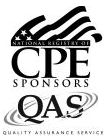How to Write a Business Plan (CPE Course)
CPE Credit: 5 hours
Course Type: Downloaded PDF materials with online test
Price (with PDF Textbook): $50
Course Description
Starting up a new business is fraught with risk, since most of them fail. Formulating a business plan is a good way to analyze the potential failings of a business concept, which can trigger the decision to proceed – or walk away. In the How to Write a Business Plan course, we cover every aspect of the planning process, including selecting the right type of business, evaluating risks, identifying the best marketing options, and deciding which type of legal entity would be the best fit. In short, this course is intended to walk the aspiring entrepreneur through every step of writing a business plan.
Author: Steven Bragg
Course Number: BM1015
Table of Contents
Chapter 1. Overview of Business Plans
Chapter 2. Business Selection
Chapter 3. Marketing Considerations
Chapter 4. Personnel Considerations
Chapter 5. The Business Plan
Chapter 6. Business Financing
Chapter 7. The Structure of the Business Plan
Chapter 8. Types of Business Entities
Learning Objectives
Identify the contents of a business plan.
Specify the topics of a planning self-assessment.
Describe the advantages and disadvantages of a SWOT analysis.
Identify some of the barriers to entry that may be found in an industry.
Specify the key measurements to use when evaluating a business plan.
Identify the circumstances under which a decline in sales would be especially troubling.
Recall the elements of a marketing campaign for a start-up business.
Specify the different types of sales promotions for a start-up business.
Describe the sources of an organization’s culture.
Specify the characteristics of the different components of the cost of goods sold.
Specify the considerations when budgeting for capital spending.
Recall the flaws that can appear in a business plan financial projection.
Recall the legal issues associated with a cosigning arrangement.
Specify the options for funding a start-up business.
Identify the requirements of angel investors and venture capital firms.
Recall the disadvantages of working with a money broker.
Recall the contents of a personal financial statement.
Specify the requirements for each component of a business plan.
Identify the most appropriate page length for a business plan.
Recall the advantages and disadvantages of each form of organizational structure.
Level: Overview
Instructional Method: QAS Self-Study
NASBA Category: Business Management & Organization
Prerequisites: None
Advance Preparation: None
Latest Review Date: September 2024
Program Registration Requirements: Click on "Purchase Course" near the top of this page to pay for and access the course. You will then be able to download the course as a PDF file, then take an on-line examination, and then download a certificate of completion if you pass the examination.
Program Refund Policy: For more information regarding administrative policies concerning complaints, refunds, and other matters, see our policies page.
AccountingTools, Inc. is registered with the National Association of State Boards of Accountancy (NASBA) as a sponsor of continuing professional education on the National Registry of CPE Sponsors. State boards of accountancy have the final authority on the acceptance of individual courses for CPE credit. Complaints regarding registered sponsors may be submitted to the National Registry of CPE Sponsors through its website: www.nasbaregistry.org.
The NASBA sponsor identification number for Accountingtools, Inc. is 115881.
AccountingTools is an IRS Approved Continuing Education Provider. We are compliant with the requirements for continuing education providers (as described in sections 10.6 and 10.9 of the Department of Treasury’s Circular No. 230 and in other IRS guidance, forms, and instructions). Our IRS Approved Continuing Education Provider number is 72821.


